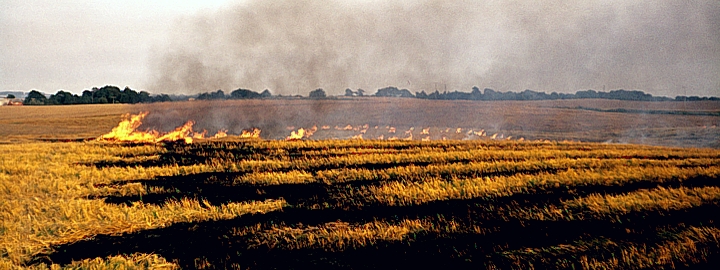 |
Terra Preta de Indio
Biochar Soil Management |
 |
Content: J. Lehmann
Host: Cornell University
Layout: K. Hanley
For optimal viewing:
This website is best viewed in a resolution of 1024 or higher, 32 bit color, and in Mozilla Firefox. Javascript, CSS and Tables.
|
 |
| © All original content belongs to Cornell University. This is a non-profit website for educational purposes that claims no ownership of copyright material. Other images and text belong to their respective owners. No copyright infringment intended. |
| |
| |
| |
|
| Biochar and Terra Preta at AAAS-2006 |
| At the Annual Meeting of the American Academy for the Advancement of Science (AAAS) in St. Louis, MO, February 15-19 2006, a symposium was held on "Amazonian Dark Earths - New Discoveries". This session was organized by Kent Mathewson and William Woods, and featured four speakers: Eduardo Neves (University of Sao Paulo, Brazil), Susanna Hecht (University of California at Los Angeles, USA), Beata Madari (Embrapa, Brazil), and Johannes Lehmann (Cornell University, USA). The session received much interest and a separate Press Conference was organized (see coverage below). |
Eduardo Góes Neves (Speaker), Universidade de São Paulo
Terra Preta de Indio: The Archaeological Past
Susanna B. Hecht (Speaker), University of California, Los Angeles
Terra Preta: The Ethnographic Past and Present
Beáta Emöke Madari (Speaker), Embrapa Solos Ministério da Agricultura, Brasil
Understanding Indian Black Earths: A Pedological and Agronomic Approach
Johannes Lehmann (Speaker), Cornell University
Terra Preta: Meeting Challenges of Soil Degradation and Climate Change |
| |
Terra Preta panelists at the AAAS Press Conference:
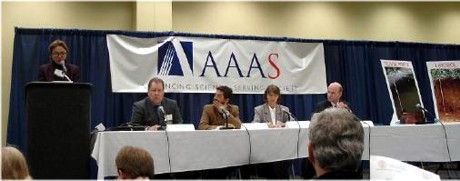
from left to right: moderator, Bill Woods, Eduardo Neves, Beata Madari, Johannes Lehmann |
| |
| Biochar at AAAS 2006: Press Release by Dr. Johannes Lehmann |
| At the Annual Meeting of the American Academy for the Advancement of Science (AAAS) in St. Louis, MO, February 15-19 2006, a symposium was held on "Amazonian Dark Earths - New Discoveries". This is the Press Statement and the link to the Cornell Press Release of our talk. |
| Cornell Press Release |
Press Statement:
"Terra Preta is not a magic potion, but it has provided the decisive inspiration for the development of a new concept of soil management. The most important ingredient that makes terra preta so special is the high amount of charcoal or biochar. Terra Preta, as well as soils that we create today by adding biochar, has two outstanding properties: (1) a greater ability to retain nutrients and increase soil fertility, and (2) greater organic matter stability than produced by any other known soil additon. Three opportunities arise from these unique properties: (1) stopping soil degradation and allowing sustainable crop production with minimal inputs (with all associated economic and environmental benefits), (2) reducing pollution of surface and ground water by retention of phosphorus and nitrogen in soil, and (3) mitigating climate change by providing a long-term carbon sink and reducing emissions of greenhouse gases other than CO2. If you consider adding organic matter to soil, it should be biochar!
Where does biochar come from? Multiple opportunities exist for combining biochar production with biomass production or organic waste disposal that provide the initial economic incentive. For example, an emergent technology such as low-temperature pyrolysis produces energy from biomass with virtually no emissions and yields a biochar by-product. This is an approach that combines biomass energy production without land degradation (since the biochar is returned to soil) with the additional benefits of lowering water pollution and reducing greenhouse gas emissions. This may be the only strategy to produce energy and be not only carbon-neutral (as with most renewable energies) but even carbon-negative. And if animal manures are used for this power generation, then we are also taking care of the disposal of a waste product that threatens drinking water resources as well as aquatic habitats. Such a technology has clear economic and social advantages and should be of interest for countries such as the US where new energy source development is an important issue. So, stay tuned. This may just be the beginning of a biochar revolution." |
| |
| Terra Preta meeting in the press |
Radio:
Science Update - mp3 | article
The Inoculated Mind Radio UC Davis - mp3 |
Print & Online:
Cornell Chronicle - press release
NBC - article
NewsWise - article
Science News - pdf
Sonntagszeitung (Switzerland), 03-12-2006 - pdf
BioScience, April 2006, Vol 56, page 368 - pdf
The Star - article
Chemistry World - article
YubaNet - article
Fox News - article
Innovations Report - article
Live Science - article
Planet Save - article
Folha Online - article
Ciencia Online - article
Caracol Noticias - article
Die Welt - article | pdf
NewsWise - article
Life Science - article |
| |
| The day before the Terra Preta Symposium, Bill Woods organized a wonderful trip to the famous Cahokia excavations, right outside St. Louis. And again, it has all to do about agriculture: |
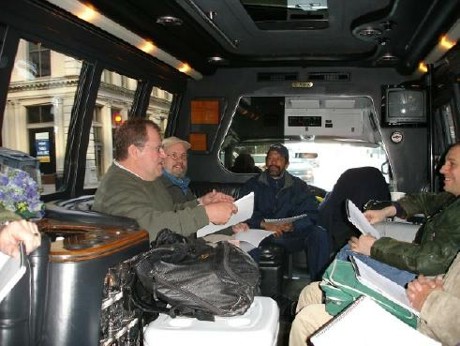
from left to right: Bill Woods, Kent Mathewson, Eduardo Neves; on the way to Cahokia |
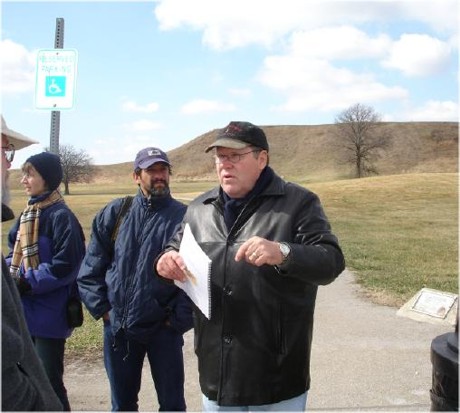
from left to right: Kent Mathewson, Beata Madari, Eduardo Neves, Bill Woods; in the background Cahokia's Monks Mound |
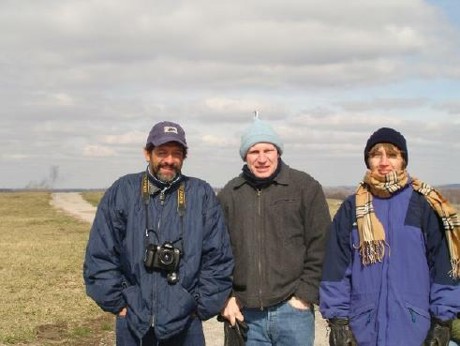
from left to right: Eduardo Neves, Johannes Lehmann, Beata Madari on Monks Mound |
|

